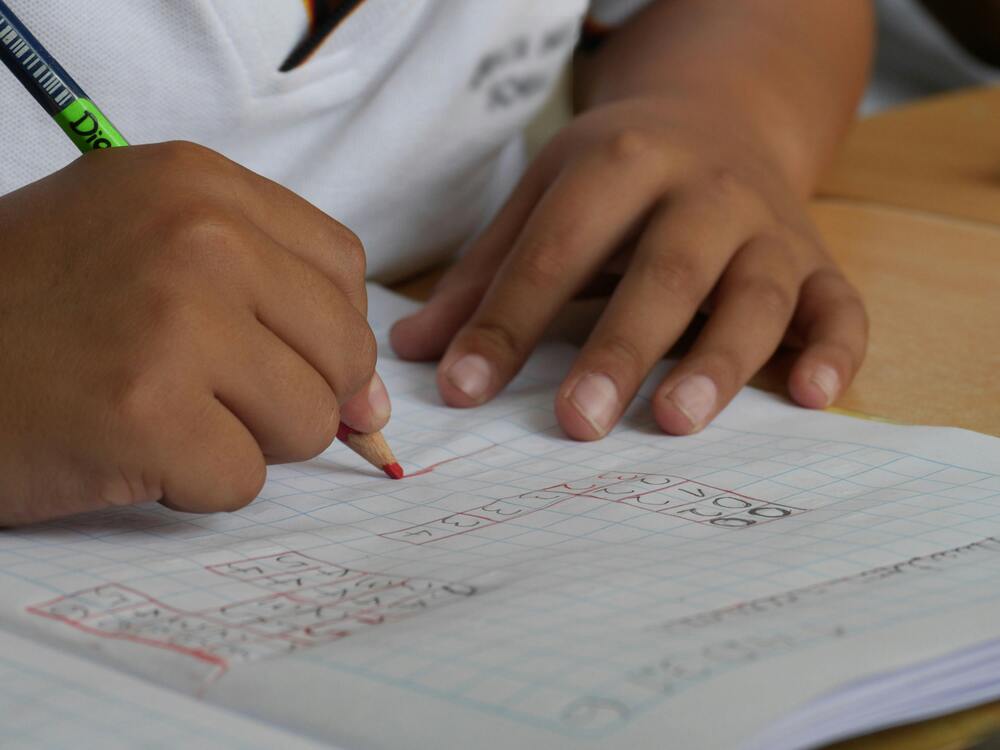Embarking on the Montessori method of education for your child is like unveiling a tapestry of learning woven with the rich threads of hands-on learning, independence, and respect for a child’s natural psychological development. Founded by the Italian physician Maria Montessori, this method is not just a form of education; it’s a journey into cultivating a holistic environment that enriches your child’s developmental milestones from ages 1 to 6.
Understanding the Montessori educational approach becomes paramount as more families seek alternatives to traditional school settings. It not only places your child in a Montessori classroom environment that nurtures their individuality but also guides them toward becoming compassionate, curious, and capable learners under the tutelage of a Montessori teacher.
In this article, we look into the essence of the Montessori approach, exploring its significance for your child’s development and offering actionable insights to master the Montessori principles at home. Whether your child is part of a Montessori program or you’re aiming to infuse your home learning environment with Montessori methods, these insights will pave the way for a transformative educational journey. Stay tuned as we unlock the 5 keys to mastering the Montessori learning style, setting the stage for a lifetime love of learning.
1. Create An Accessible And Organized Environment For A Montessori Education

The cornerstone of the Montessori method of education lies in the strength of its learning environment. Maria Montessori believed in the transformative power of an immersive, accessible, and organized space that responds to a child’s ever-changing needs and interests. Let’s unlock how to cultivate this environment right within your home:
- Accessibility: Reflect a Montessori classroom with your home setting. Prioritize child-sized furniture that enables confident movement and exploration. Low shelves, tables, and chairs make your child become more independent, fostering a sense of belonging and self-sufficiency.
- Designing the Space: Create areas for different activities like reading, crafting, or imaginary play, mirroring the areas in a Montessori school. Make sure these spaces are well-lit and inviting and retain a certain level of simplicity to avoid sensory overload.
- Organization: The power of Montessori education escalates with the organization of materials. Use trays and baskets to organize learning materials. Make these containers reachable so that your Montessori students at home have an unrestricted approach to their learning resources.
- Designated Place: Maria Montessori championed the idea of “A place for everything, and everything in its place”. Ensure each item has a designated spot. This instills responsibility and respect for their environment, which are key Montessori principles.
It is important to remember that a Montessori environment is ever-evolving and responds to your child’s growth. As the home-based Montessori teacher, you’re guiding your child through an enriched learning journey, starting with an environment they can call genuinely theirs. The anticipation of this discovery fuels the desire for hands-on learning in a Montessori program, a stark contrast to a traditional school setting.
2. Foster Independence Using The Montessori Approach Or Learning Style

Fostering independence is a linchpin of Montessori education, allowing children the freedom to learn at their own pace and follow their innate curiosity. The Montessori theory posits that when children are given the autonomy to choose their tasks, it breeds a lifelong love of learning. Below, explore strategies to encourage self-sufficiency at home that mirror the Montessori curriculum, further cementing the importance of independence.
- Encourage Age-Appropriate Tasks: Begin by introducing simple, age-appropriate tasks that children can complete with minimal assistance. This could range from dressing themselves to setting their place at the table. Authentic Montessori environments often feature tasks organized in a manner that gradually increases in complexity, fostering a sense of accomplishment and self-belief.
- Provide Time for Completion: Rushing a child through a task is antithetical to the Montessori approach. Allow children the time they need to complete tasks to their own satisfaction. This patience pays dividends, helping them develop a detailed-oriented and deliberative mindset – attributes that are highly valued in both Montessori and traditional education settings.
- Emphasize the Learning Process: Shift the focus from the outcomes to the learning journey itself. Encourage children to reflect on what they’re doing rather than what they’ve finished. This perspective, rooted in the Montessori educational method, helps children appreciate their efforts, nurturing a resilient and adaptive mindset.
Echoing the tenets of Montessori, fostering independence isn’t just about enabling children to do things by themselves but encouraging them to think, explore, and solve problems independently. This foundation supports their academic development and cultivates critical life skills that pave the way for a flourishing, self-directed future. In the Montessori context, independence is the scaffolding upon which children build a detailed understanding of themselves and their place within the world.
3. Introduce Multi-Sensory, Hands-On Learning

In the realm of Montessori, multi-sensory, hands-on learning reigns supreme. Guided by the principles of Maria Montessori, these activities allow children to explore and discover their world. This enriching approach yields numerous benefits, acting as the pivot around which the Montessori method of education revolves. Here are some ways to incorporate it into your Montessori program at home:
- Sensory-Based Learning: A Montessori classroom buzzes with a variety of textures, smells, sounds, and colors designed to stimulate the senses. You can create your own sensorial experiences at home, for instance, through texture boards or scented bottles. These activities encourage children to observe, differentiate, and make sense of their surroundings.
- Hands-On Activities: Embrace interactive learning over passive absorption. Activities such as sorting objects by color, size, or shape fuel hands-on learning. These practical tasks reinforce problem-solving skills and independent thinking, hallmarks of the Montessori method.
- Harnessing Sound: Simple musical instruments like maracas or xylophones can be a beautiful way to introduce sounds and rhythms. It encourages auditory discrimination while injecting fun into the learning process. It’s a musical journey that mirrors the vibrant spirit of a Montessori environment.
- Kitchen Tasks: Preparing simple snacks allows children to understand food ingredients and promotes self-sufficiency. It fosters a love for culinary arts and develops gross and fine motor skills, resonating with the holistic Montessori approach.
Injecting multi-sensory, hands-on learning into your daily routine steers your Montessori students towards self-guided exploration and discovery, embodying the ethos of Montessori education. Remember, the goal is not to isolate learning into a separate entity but to seamlessly weave it into everyday life.
4. Cultivate Concentration And A Love For Learning

Cultivating concentration and fostering a deep-seated love of learning are quintessential to the Montessori education philosophy. The Montessori theory advocates for harnessing a child’s natural curiosity as the seed for their educational journey. Here’s how to nurture focus and enthusiasm for learning in your home, in line with the Montessori Method:
- Encourage Natural Curiosity: Lean into your child’s interests. The Montessori curriculum is designed to spark curiosity, inviting exploration and discovery. By observing which activities your child gravitates towards, you can provide more of what fascinates them, making learning an exciting adventure.
- Techniques for Fostering Concentration: Introduce thoughtfully prepared learning materials and environments that match your child’s developmental stage. The careful selection of Montessori materials encourages deep engagement, allowing children to immerse themselves in focused work time. This approach builds concentration and encourages children to learn at their own pace, a cornerstone of Montessori education.
- Offer Challenges: Match activities to your child’s interest, but ensure they are slightly challenging. Challenges stimulate the mind and keep the flame of learning alive. Offer guidance where necessary, but allow them the space to overcome difficulties, reinforcing their problem-solving skills and independence.
- Balance is Key: While structured activities are important, allowing time for free exploration is equally crucial. This balance ensures that children enjoy scheduled learning and the freedom to pursue their interests. It’s within this space that children often discover new passions, further fueling their love of learning.
By embedding these principles into your home environment, you’re educating your child and nurturing a lifelong learner. Montessori observed that children are naturally eager for knowledge and capable of initiating learning in a supportive, thoughtfully prepared environment. Embrace this, and watch as your child’s unique learning style flourishes, embodying the true spirit of Montessori education.
5. Teach Respect And Social Responsibility Using The Montessori Method

Montessori education is not just about academics; it’s a holistic approach that includes cultivating social and emotional skills. Embed these pillars in your home, nurturing children who are just as adept in kindness and community as they are in knowledge.
- Social and Emotional Growth: The Montessori classroom prioritizes emotional development. Crafting a similar learning environment at home means modeling and discussing feelings, empathy, and relationships. Here, your child learns to respect themselves and the intricate feelings of others.
- Respect All Around: Maria Montessori believed every part of our world deserves respect. Reinforce this foundational value by showing care for your home, the environment, and all its inhabitants. Encourage kids to care for plants, cherish pets, and keep their play space orderly.
- Community Connection: Involve little ones in daily tasks. From setting the table to sorting recycling, these responsibilities build a sense of community and allow kids to understand the value of contributing to the family unit.
- Nature’s Nurture: Gardening transcends simple plant care. It’s about life cycles, the environment, and sustenance, reinforcing lessons from the Montessori curriculum.
Implementing Montessori principles at home can profoundly influence your child’s education and life skills. They learn to collaborate, communicate, and care — all while developing an inner discipline and sense of responsibility. In a world contrasting traditional school approaches, the Montessori method stands out by fostering a learning environment that extends beyond the classroom. The Montessori approach, developed by the Italian physician and educator Maria Montessori, is esteemed by the American Montessori Society for its effectiveness in nurturing respectful, responsible individuals.
As a Montessori teacher in your own home, your influence helps shape not just your child’s intellect but their heart. The hands-on learning that characterizes Montessori education is more than tactile experiences—it’s life itself. So here’s an encouragement for every parent considering this transformational method of education: let the Montessori principles guide you, and watch your child thrive in a respectful, responsible world they’re well-equipped to be a part of.

Leave a Reply